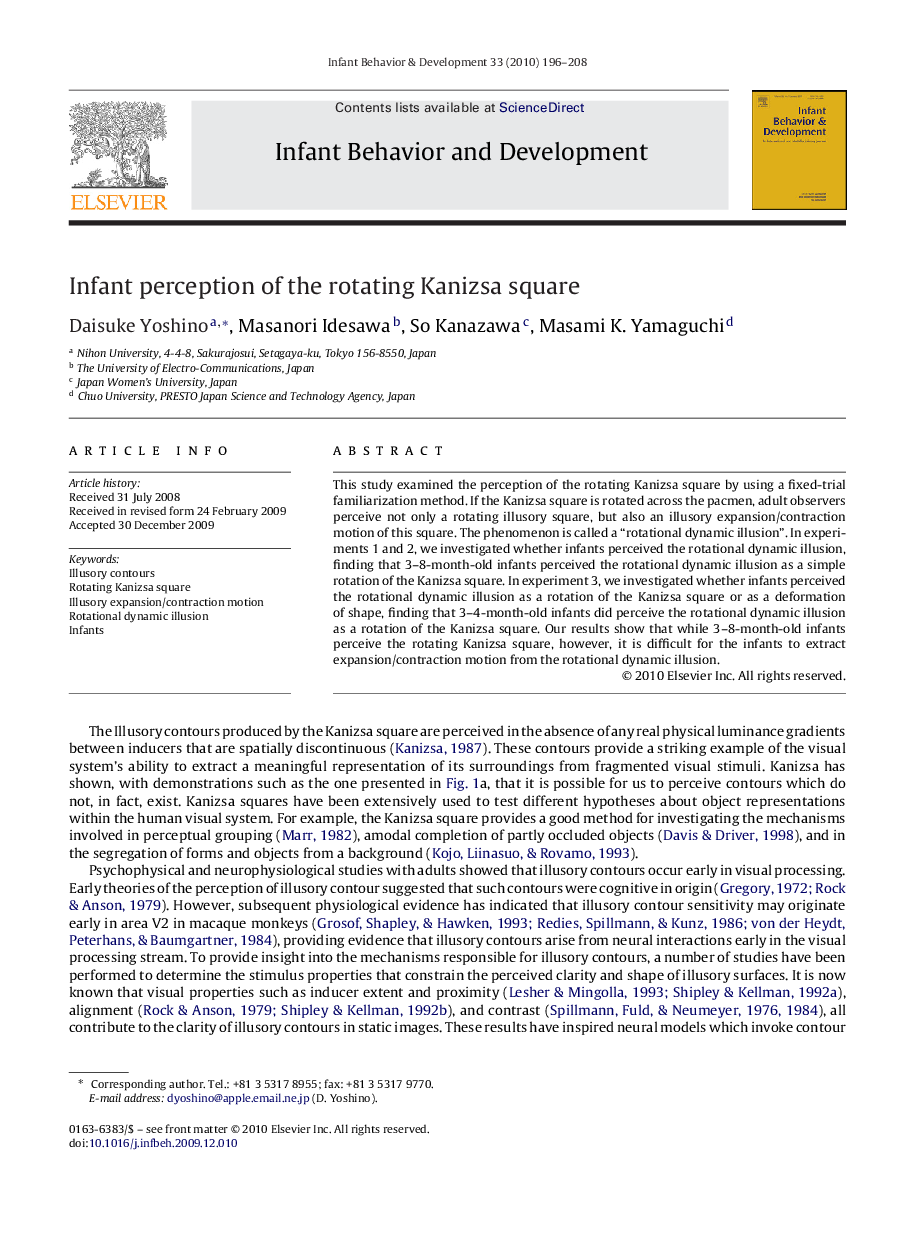| Article ID | Journal | Published Year | Pages | File Type |
|---|---|---|---|---|
| 917485 | Infant Behavior and Development | 2010 | 13 Pages |
Abstract
This study examined the perception of the rotating Kanizsa square by using a fixed-trial familiarization method. If the Kanizsa square is rotated across the pacmen, adult observers perceive not only a rotating illusory square, but also an illusory expansion/contraction motion of this square. The phenomenon is called a “rotational dynamic illusion”. In experiments 1 and 2, we investigated whether infants perceived the rotational dynamic illusion, finding that 3-8-month-old infants perceived the rotational dynamic illusion as a simple rotation of the Kanizsa square. In experiment 3, we investigated whether infants perceived the rotational dynamic illusion as a rotation of the Kanizsa square or as a deformation of shape, finding that 3-4-month-old infants did perceive the rotational dynamic illusion as a rotation of the Kanizsa square. Our results show that while 3-8-month-old infants perceive the rotating Kanizsa square, however, it is difficult for the infants to extract expansion/contraction motion from the rotational dynamic illusion.
Keywords
Related Topics
Life Sciences
Neuroscience
Behavioral Neuroscience
Authors
Daisuke Yoshino, Masanori Idesawa, So Kanazawa, Masami K. Yamaguchi,
